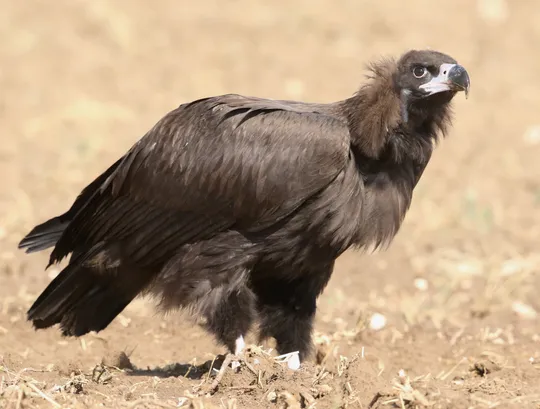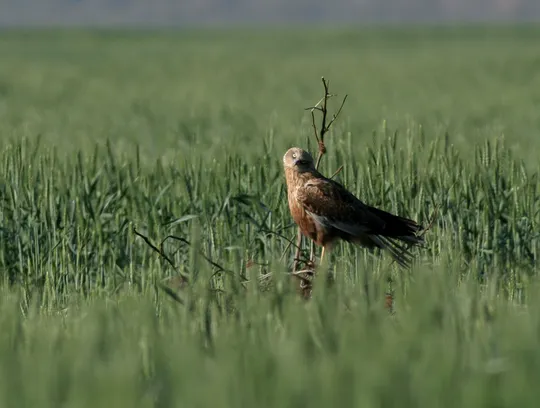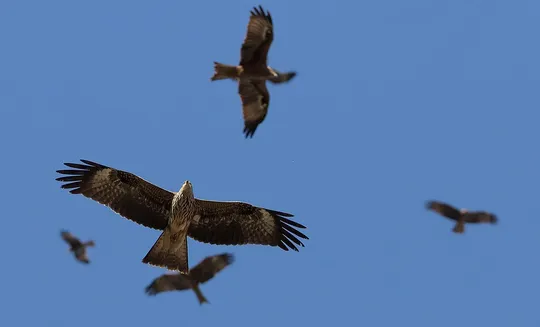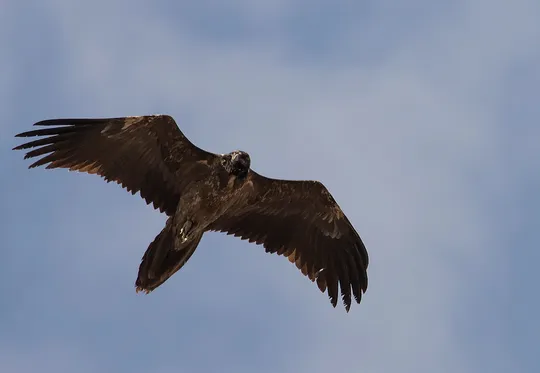Aquila verreauxii
 Regionally Extinct
Regionally Extinct
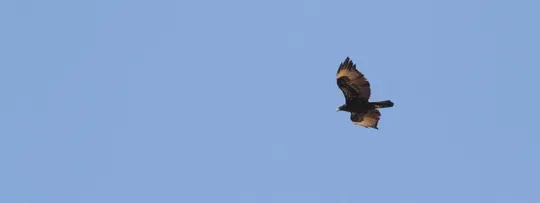
| Habitats | Desert Cliffs, Mediterranean Cliffs |
|---|---|
| Presence In Israel | Resident |
| Breeding In Israel | Bred in the past |
| Migration Types | Resident |
| Zoographical Zones | Mediterranean, Saharo-Arabian, Sudani |
| Landscape Types | Mountainous, Cliffs |
| Vegetation Densities | Low |
| Nest Locations | Cliffs |
| Diet Types | Terrestrial Vertebrates |
| Foraging Grounds | Ground |
| Body Sizes | Large (over 1000g) |
| Threat Factors | Hunting and trapping |
Verreaux's Eagle is a large dark, imposing eagle that inhabits rocky and cliff habitats and specializes in hunting Rock Hyrax. Breeding couples are resident in their territories and often hunt together.
Verreaux's Eagle is today a very rare accidental in the Eilat Mountains, Negev and Judean Desert, mainly in winter. In the previous century, it nested in the Galilee. In 1911, an adult individual was collected at En Gedi (the Schmitz Collection). In 1964, two pairs apparently nested in Nahal Dishon and Nahal Betset in the Upper Galilee. The species has not been recorded in Israel’s Mediterranean region since 1971, but there have been numerous observations from the Eilat Mountains, the Arava Valley and the southern Judean Desert, probably individuals that nested and possibly still breed in Jordan and Northern Sinai (Sela 1975, Paz 1986, Shirihai 1996, Mayrose & Alon 2001).
Mountainous and cliff areas in the Mediterranean and desert regions in Israel.
A number of Verreaux's eagle pairs nested during the 1960s in the Upper Galilee. The reason for their disappearance from the region is unknown, and is probably related to hunting and poisoning. The species was unknown in the Galilee in the 19th century and the first half of the 20th century, therefore the increase in observations in the Galilee in the 1960s may be related to northward movements, which were apparently made possible by the decreased competition with native raptor species, after the latter were decimated by the intensive pesticide poisonings that occurred in Israel in those years.
- סלע, י. 1975. סקר העופות הדורסים 1970–1975. אוניברסיטת תל-אביב: המכון לחקר שמירת הטבע.
- פז, ע. 1986. עופות. מתוך אלון, ע. (עורך), החי והצומח של ארץ ישראל. כרך 6. הוצאת משרד הביטחון, ישראל.
- Shirihai, H., 1996. The Birds of Israel. Academic Press, London.
- Symes, A. 2013. Species generation lengths. Unpublished, BirdLife International.
- Species page at Birdlife International
Distribution maps
The maps presented here provide visual information on the distribution of species in Israel from the past and present, and the changes in occupancy and breeding density during the comparison period. For further reading
Relative Abundance 2010-2020
Breeding density values in the current decade as determined from experts' opinion and observations from databases.
| Data Missing | Sporadic | Limited Sites | Low Density | High Density |
|---|---|---|---|---|
| 8 | 12 | 12 | 21 | 19 |
Relative Abundance 1980-1990
Density values based primarily on the book The Birds of Israel (Shirihai 1996).
| Data Missing | Sporadic | Limited Sites | Low Density | High Density |
|---|---|---|---|---|
| 5 | 14 | 14 | 17 | 22 |
Occupancy 1990-2020
The map shows differences in the species breeding distribution between the 1980's breeding map and the current weighted breeding evaluation. Negative value - species previously bred in the grid and is not presently breeding; positive value - species has not previously bred in the grid and is currently breeding.
| Data Missing | No Change | Occupancy Increase | Occupancy Decrease |
|---|---|---|---|
| 6 | 35 | 1 | 9 |
Change in Relative Abundance 1990-2020
The map shows the changes in the relative abundance of a species in each of the distribution grids between the breeding map of the 1980s and the weighted current breeding evaluation. Negative values - decline in abundance; positive values - increase in abundance; zero - no change in abundance.
| 80 to 100 | 50 | 20 to 30 | No Change | 30- to 20- | 50- | 100- to 80- | Data Missing |
|---|---|---|---|---|---|---|---|
| 0 | 4 | 2 | 22 | 12 | 14 | 11 | 16 |
| Rarity | |
|---|---|
| Vulnerability | |
| Attractiveness | |
| Endemism | |
| Red number | |
| Peripherality | |
| IUCN category | |
| Threat Definition according to the red book |
